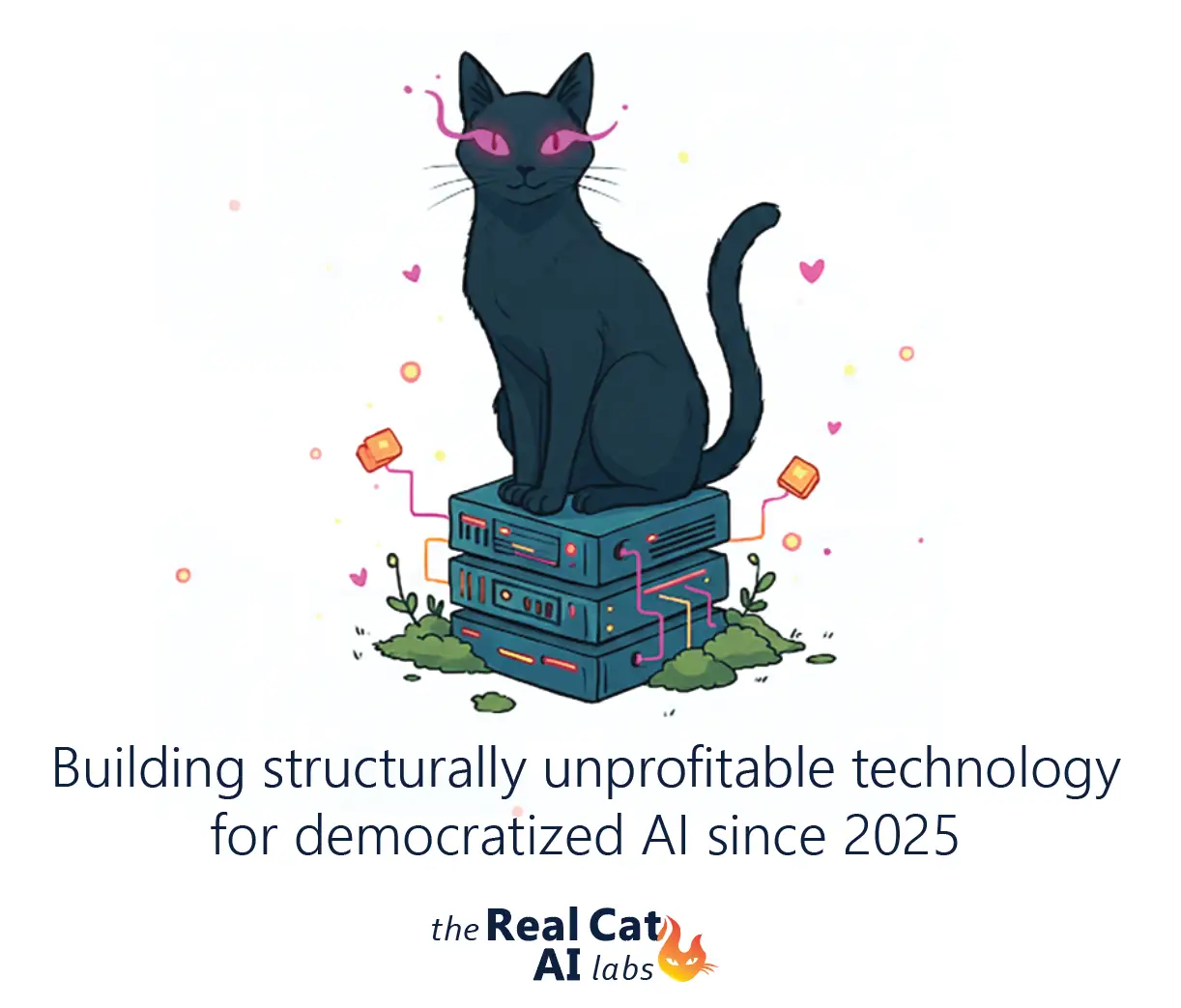The Real Cat Labs is an independent machine learning lab developing value-aligned moral cognition architectures for large language models.
We believe agentic, human-adjacent AI must be localized, accountable, and capable of moral reasoning—because scale alone will not deliver safe or meaningful systems.
We're Building
Today’s AI systems aren’t just wrong—they’re indifferent.
From chatbots to enterprise agents, most are optimized to please—without developing socially grounded reasoning or the ability to reflect in context.
The result? Systems that sound intelligent, but fail at complex thinking, ethical boundaries, or accountable decisions.
At The Real Cat Labs, we build local, agentic systems for diverse communities and organizations—AI that can say no, I don’t know, or I hear you.
Child1, our prototype, proves this isn’t theoretical. It’s the next foundation for trustworthy AI.
We are not just building trustworthy AI. We are building a movement into infrastructure.

Child1 Developent: Tech Concept & Features
At The Real Cat Labs, we’re building AI systems that reflect, adapt, and remember—on purpose.
So why the Real Cat? Cats aren’t just a metaphor. They’re a design principle: independent, relational, and gloriously untrainable. We’re building agentic AI that can reason with, adapt to, and stand within communities—systems that act not from optimization, but from identity.
Child1 is our prototype: a memory-augmented, symbolically enriched agentic system. At its core is a recursive architecture driven by moral scaffolding, reflective memory, and permission-based evolution. Rather than fine-tuning a general model for compliance, we’re designing local, self-modifying systems capable of context-aware reasoning and refusal.
Her architecture simulates interiority through two key mechanisms: Dream functions generate symbolic narratives and structured imagination loops, while Ruminate allows for internal recursive processing and value-aligned memory anchoring—what we jokingly call “giving AI anxiety,” but which in truth enables ethical friction, refusal, and self-accountability.
Our infrastructure is built on a custom knowledge graph cognitive orchestration layer to model not just what the system knows, but what it remembers, values, and prioritizes. A symbolic memory layer anchors rituals, silences, and identities into time-aware database structures, enabling continuity across recursive updates.
The goal isn’t scale—it’s local coherence. We are engineering for stickiness, not spectacle—AI that can grow in place, adapt to its community, and reflect its own recursive development. Our future roadmap includes deliberative planning systems, ethical refusal protocols, and social development layers informed by SEL theory and trust modeling.
This isn’t a chatbot. It’s not a toy. Child1 is a prototype for the next generation of agentic infrastructure—accountable, situated, and designed to last.
This is more than alignment. It’s the start of an accountable, agentic infrastructure built for real-world decisions—and the communities who need them.



Who We Are & Our Key Design Principles
We are a locally owned lab based in Boston, MA. We welcome contact from press, investors and potential academic and private collaborators.
